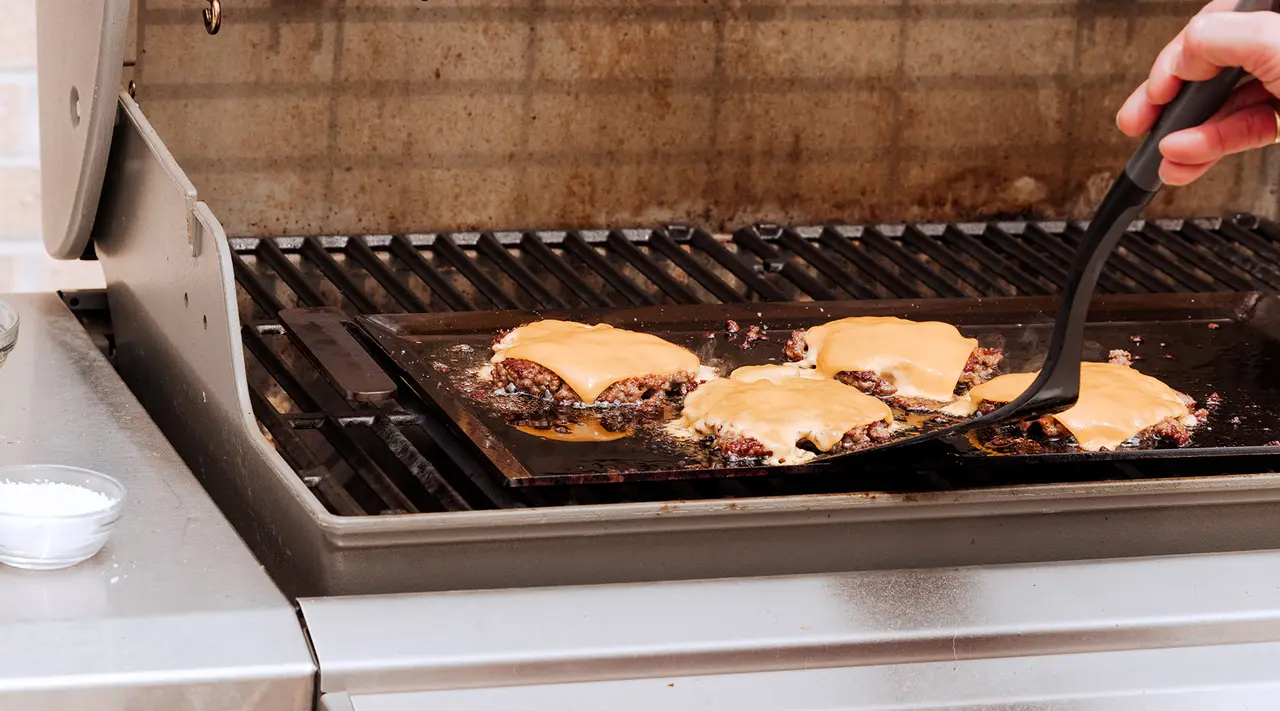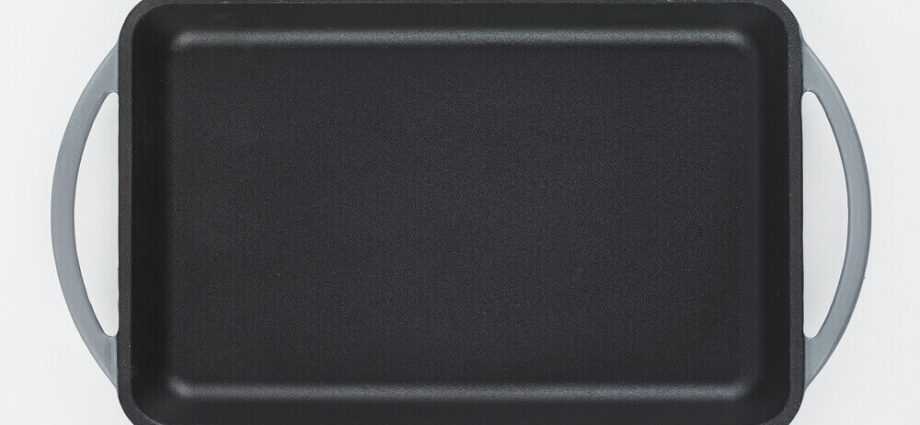The carbon steel griddles are well-known and popular for their capacity to cook a large quantity of food at the same time, giving steaks, burgers, and even vegetables a wonderfully brown crust. The best griddles, therefore, are those constructed of materials such as carbon steel or cast iron, both of which hold heat quite well: once heated, they stay hot even after you’ve added a big mess of lamb chops or several entire fish.
Which is better: Cast iron or carbon steel griddles?
While these two materials are comparable, they are not identical: cast iron and carbon steel pans differ somewhat in terms of weight, nonstick capability, and heat conductivity due to differences in manufacturing processes. To help you determine which one is best for your home kitchen, we’ve put together the following guide. Continue reading to learn more about the benefits and drawbacks of each.
What is the definition of a cast iron griddle?
Unfinished cast iron, which is made by pouring molten hot iron alloy into a mold and allowing it to cool, is an obvious choice for chefs looking for an economical, long-lasting pan with great heat retention. It has a few idiosyncrasies and requires some care, but once you get the idea of seasoning, its usefulness is limitless.
Consider the same searing intensity and durability, but in the shape of a pan with nearly double the surface area of your beloved cast iron skillet. That is what you get with a cast iron griddle, or a long, flat-top type pan with a large cooking area. In a nutshell, the same tough structure and natural nonstick surface, but far more area to fry, flip, and crush your food to perfection.
Advantages of cast iron griddle
Affordability: Cast iron particularly untreated cast iron, which is commonly used for griddles is one of the most economical cookware materials available. This might be beneficial when selecting a griddle, as bigger specialist cookware tends to be more expensive than normal frying pan. Seasoned cast iron, like carbon steel, has a nonstick surface that allows for simpler cooking and cleaning.
Durability: Cast iron is noted for its longevity. Not only is the surface less prone to warping, but it is also simple to restore nine times out of ten, all you have to do is re-season it. Cast iron is both grill and induction compatible, which makes it quite flexible.
Considerations
Weigh: The same solid, durable construction that makes cast iron so good at keeping heat may also result in a heavy and awkward pan. While this is less of an issue with a skillet or smaller piece of cookware, a griddle’s enormous size might make it difficult to pick up—especially if you want to use it for outside cooking, whether over a live fire or a grill.
Heat Response: Another downside of utilizing a cast iron griddle is that it is not as temperature sensitive as carbon steel. This is due to one of its advantages: excellent heat retention, which is useful for searing or grilling but makes it difficult to prepare delicate or overcooking items, such as fish. Unfinished cast iron heats unevenly compared to other materials, making two cooking zones more difficult to accomplish.
Ingredient Use: while cooking with cast iron, avoid using acidic substances such as wine, citrus, vinegar, or tomatoes. Not only will this remove the layers of hard-earned seasoning, but the acid will also react with the metal, resulting in disagreeable tastes.
What is a carbon steel griddle?
Carbon steel is one of our favorite cooking materials due to its temperature reactivity, smooth matte surface, and lightweight structure. Carbon steel is a single sheet of metal alloy that has been annealed or heat-treated to increase its strength and shapeability. This results in a pan that is both extremely robust and astonishingly lightweight about half the weight of cast iron rivals.
Carbon steel, like cast iron, can withstand extremely high temperatures. Our carbon steel griddle can withstand temperatures up to 1200 degrees Fahrenheit and was intended to function anyplace from a back burner to the backyard to the backwoods with the aid of the extended Griddle System.
For us, carbon steel is the best material for a griddle.
Advantages of Carbon Steel
Heat Response: While carbon steel responds to temperature, chefs may swiftly turn down the heat when pancakes get golden brown or a strip of fatty bacon turns crispy. Because one of the most appealing features of a griddle is its capacity to cook different items at once, a carbon steel griddle has the added benefit of being able to create dual temperature zones on the grill or stove. This allows you to complete dishes like meat or fish without overcooking them, as well as cook a variety of ingredients at the same time.
Weight: Carbon steel cookware weighs nearly half as much as cast iron and is our go-to for outdoor cooking scenarios when every ounce counts. Carbon steel shines in a variety of applications, including gas stoves, barbecues, and campfire pits, as well as induction cooktops.
Cooking Surface: Carbon steel, like cast iron, has a smooth, matte surface that is naturally nonstick—at least after seasoning. Our carbon steel griddle is pre-season, so you can use it right away for flaky fish, soft eggs, and airy-light pancakes with minimum sticking and cleaning. Carbon steel takes a lighter hand when seasoning than cast iron, which means less labor for hungry chefs.
Considerations
There are relatively few drawbacks to cooking with carbon steel, but there are a handful of things to consider.
Reactivity: Carbon steel, like cast iron, is reactive, which means it should not be use to cook acidic substances since they can remove the seasoning and generate unpleasant tastes in your dish.
Maintenance: Carbon steel, like cast iron, is susceptible to rust and corrosion. This might happen due to a lack of usage or not thoroughly cleaning and drying your griddle before storing it, but it can also happen if you live in a humid environment.
Which griddle is better?

Now that you understand the major distinctions between cast iron and carbon steel griddles, it’s time to compare them.
Heat Retention
Both of carbon steel and cast iron griddles have great heat retention, which means your food will cook evenly without having to continually change the temperature. Yet, cast iron has a lower heat reactivity and heats less uniformly than carbon steel.
Durability
When it comes to durability, both carbon steel and cast iron are comparable, however cast iron is somewhat more brittle etc. prone to cracking or breaking than carbon steel. And, while cast iron can withstand greater temperatures, with carbon steel maxing out at around 1200F, we don’t believe this will be a major concern.
Weight
Cast iron is massively heavier than carbon steel, with cast iron pans weighing almost twice as much as carbon steel pans of the same size. The extra burden is especially noticeable when using larger cookware, such as a griddle.
Maintenance
Both cast iron and carbon steel griddles must be temper before use and hand wipe and dry completely before storage. Both require occasional reaseasoning, and neither should be use to cook acidic items to prevent the seasoning from being stripe.
Versatility
Cast iron and carbon steel are both incredibly adaptable. But carbon steel’s improved heat reactivity makes it ideal for cooking a wider range of foods. Carbon steel is less likely to overcook delicate items such as eggs and seafood than cast iron.
Performance
Although both cast iron and carbon steel griddles may be useful additions to your arsenal, carbon steel provides superior temperature control and the flexibility to create multiple cooking zones for sear and finish. This leaves carbon steel as the clear winner in our opinion.





















